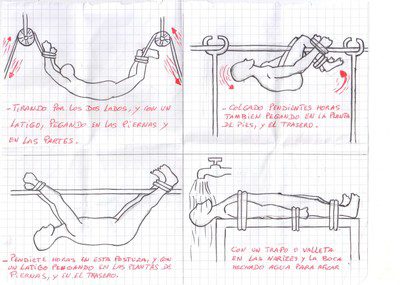International day in Support of Victims of Torture: History, Theme, and Significance

26 June is observed as an International day in support of victims of torture. It is the UN’s International Day in Support of Victims of Torture. The day serves as a reminder to people that torture is a crime. This event gives everyone a chance to unite and voice their opinions against human torture. Organizations, including the International Rehabilitation Council for Torture Victims and Amnesty International, have played an active role in organizing events around the world to promote the day.
Important Points Related to International day in support of victims of torture
The International Day in Support of Victims of Torture observed annually on June 26th, stands as a solemn reminder and a call to action against the crime of torture. This day was established by the United Nations General Assembly resolution 52/149 on December 12, 1997, with the aim of the total eradication of torture and the effective functioning of the Convention against Torture and Other Cruel, Inhuman or Degrading Treatment or Punishment.
Here are some important points related to this day:
1. Absolute Prohibition: Torture is unequivocally prohibited under international law. It cannot be justified under any circumstances, and all countries are bound by this rule, even if they have not ratified specific treaties prohibiting torture.
2. A Crime Against Humanity: The systematic or widespread practice of torture is recognized as a crime against humanity. The United Nations has condemned torture as one of the vilest acts perpetrated by humans against their fellow beings.
3. Support for Victims: The day emphasizes the need for rehabilitation programs for torture victims. Prompt and specialized rehabilitation can help victims transition from horror to healing.
4. Global Awareness: The observance is a global call to action for UN Member States, civil society, and individuals everywhere to unite in support of those who have suffered from torture.
5. Denouncement of Justifications: Despite some entities justifying the use of torture for national security or other reasons, the international community firmly rebukes such arguments, affirming that disciplined troops do not torture and that there are no excuses for torture.
6. Healing and Rehabilitation: The day also highlights the importance of healing through rehabilitation, acknowledging the work of centers and organizations worldwide that support victims in transitioning from suffering to recovery.
7. Global Campaigns: Each year, organizations worldwide commemorate this day with various events, campaigns, and activities to raise awareness and support for victims of torture.
International Day in Support of Victims of Torture 2024: Theme
26 June is observed as an International day in support of victims of torture. It is the UN’s International Day in Support of Victims of Torture. The theme for the year 2024, “Voices Against Torture: A Call for Global Justice and Human Rights,” emphasizes the collective responsibility to raise awareness and advocate for justice and human rights for all individuals, especially those who have endured the unimaginable pain and suffering caused by torture.
Past Year Themes
| Year | Theme |
|---|---|
| 2015 | Right To Rehabilitation (R2R) |
History of International Day in Support of Victims of Torture
In 1948, the UN General Assembly adopted the Universal Declaration of Human Rights, which condemned torture and other cruel, inhuman, or degrading treatment. In 1975, the General Assembly adopted the Declaration on the Protection of All Persons from Torture and Other Cruel, Inhuman, or Degrading Treatment or Punishment in response to non-governmental organizations (NGOs).
Progress was made both in developing legal standards and instruments and in enforcing the ban on torture in the 1980s and 1990s. The United Nations Voluntary Fund for Victims of Torture was established by the General Assembly in 1981 to fund organizations providing assistance to victims of torture and their families.
In 1984, the General Assembly adopted the Convention against Torture and Other Cruel, Inhuman, or Degrading Treatment or Punishment, which took effect in 1987. The Committee against Torture monitors how States Parties implement it.

Significance Of International Day in Support of Victims of Torture
The International Day in Support of Victims of Torture observed annually on June 26th, stands as a solemn reminder and a global call to action against the crime of torture. This day holds significant importance as it symbolizes the collective condemnation of torture and offers support to those who have suffered from such inhumane acts.
The United Nations General Assembly proclaimed this day with the aim of eradicating torture and ensuring the effective functioning of the Convention against Torture and Other Cruel, Inhuman or Degrading Treatment or Punishment. It is a day that unites individuals, civil society, and member states on a common front to support victims of torture and to affirm the fundamental human right to live free from torture and degrading treatment.
The date, June 26th, was chosen to honor the signing of the United Nations Charter in 1945 and the coming into effect of the United Nations Convention against Torture in 1987. These pivotal moments in history reflect the international community’s commitment to human rights and the ongoing struggle to uphold them.
Torture is not only a grave violation of human rights but also an act that aims to destroy a person’s dignity and spirit. Despite being unequivocally prohibited under international law, torture persists in various parts of the world. The International Day in Support of Victims of Torture serves as a stark reminder that the fight against torture is far from over. It is a day to reaffirm our moral and legal obligations to prevent torture, to prosecute those responsible, and to ensure that victims receive the support and rehabilitation they need to heal and reintegrate into society.
On this day, rehabilitation centers, human rights organizations, and individuals come together to raise awareness about the effects of torture and the need for comprehensive rehabilitation programs. These programs are crucial for helping victims transition from their traumatic experiences to a process of healing.
How To Observe International day in support of victims of torture
The International Day in Support of Victims of Torture commemorated on June 26th, is a significant day that calls for global solidarity and action to support victims of torture and to work towards its complete eradication. Here are some ways to observe this important day:
1. Educate Yourself and Others: Learn about the impact of torture on individuals and societies and share this knowledge to raise awareness. The United Nations and other organizations provide valuable resources that can help deepen understanding of the issue.
2. Support Rehabilitation Programs: Many survivors of torture require specialized support to recover. Donations to rehabilitation centers or the UN Voluntary Fund for Victims of Torture can make a substantial difference in the lives of those affected.
3. Advocate for Justice: Use this day to advocate for the prosecution of those responsible for torture and the implementation of laws that protect against such inhumane acts. Engage with local and international human rights organizations to support their work in this field.
4. Participate in Events: Attend or organize events that honor victims and survivors of torture. This could include vigils, discussions, art exhibitions, or online campaigns that help to bring attention to the cause.
5. Stand in Solidarity: Sometimes, the simplest acts can be the most powerful. Standing in solidarity with victims, whether through social media or in person, sends a strong message of support and compassion.
By taking part in these activities, individuals and communities can contribute to the global movement against torture and support those who have suffered from this grave violation of human rights.
International day in support of victims of torture Observation Dates
The International Day in Support of Victims of Torture is observed annually on June 26th. This day serves as a solemn reminder of the need to stand in solidarity with the victims of torture and to collectively speak out against the inhumane act of torture, which is unequivocally prohibited under international law. International Day in support of victims of torture is observed as follows:
| 2019 | 26-Jun-19 | Wednesday |
| 2020 | 26-Jun-20 | Friday |
| 2021 | 26-Jun-21 | Saturday |
| 2022 | 26-Jun-22 | Sunday |
| 2023 | 26-Jun-23 | Monday |
| 2024 | 26-Jun-24 | Wednesday |
| 2025 | 26-Jun-25 | Thursday |
| 2026 | 26-Jun-26 | Friday |
| 2027 | 26-Jun-27 | Saturday |
| 2028 | 26-Jun-28 | Monday |
| 2029 | 26-Jun-29 | Tuesday |
Observer Voice is the one stop site for National, International news, Sports, Editor’s Choice, Art/culture contents, Quotes and much more. We also cover historical contents. Historical contents includes World History, Indian History, and what happened today. The website also covers Entertainment across the India and World.

